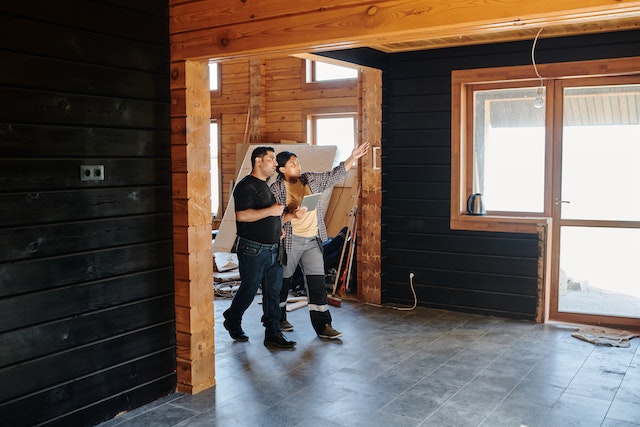Landing a construction agreement is the dream of any contractor, but this often comes with several responsibilities. Every carpenter, builder, or craftsperson needs a guarantee of protection when working on people’s property.
If you want to be exempted from responsibility for damages and injuries, you could request to have a liability release waiver signed by the contractor.
In this article, you’ll discover contractor liability release forms, what they are and how they’re applied. Continue reading to find out if you should have these waivers signed.
What Is a Contractor Liability Release Form?
A contractor liability release form (or liability waiver) is a document that absolves parties from responsibility for damages and injuries that occur while working on your property.
Suppose you have a leaky roof. You’ll need to hire a roofer to patch the leak. Before they climb on the roof, you should consider signing an agreement with them stating that you are not liable for any mishaps.
Or, looking at it from the other party’s perspective, the contractor could present you with the release form if you have expensive fittings and fixtures in the building.

What Should a Contract Include?
Now that you are familiar with contractor waivers, let’s explore their main contents. You should know these if you plan on drafting a contract yourself.
- The names of both the property owner and contractor
- The addresses of both the property owner and contractor
- A clause describing the nature of the working relationship as well as each party’s responsibility
- License and permits
- A detailed description of the project, including timelines, deadlines, and conditions for termination
- Billing, insurance, and payment details
- Confidentiality clauses and non-disclosure agreements
- Legally binding signatures of both the contractor and client
- Location and jurisdiction of the property
Benefits of Signing a Contractor Release of Liability Form
Contractors and property owners can benefit from the release of liability forms in different ways. Here are the benefits of a contractor release waiver for the homeowner:

- It prevents you from getting sued for damages. For instance, if a carpenter slips and hammers his thumb instead of a nail, you won’t be obligated by law to pay them for their injury.
- It saves you money by reducing the chances of getting fined and paying monetary compensation.
- The liability waiver prevents the contractor from disclosing the specifications of your building or other confidential information as part of the confidentiality clause.
Here are the benefits of a contractor release waiver for the contractor:
- This release of liability form protects you from any damages that may occur to the structure during construction or repairs. For instance, the waiver can shield you from paying for a stained wooden floor due to leakage from a faulty pipe.
- It protects you from vengeful homeowners who might want to pursue frivolous lawsuits against you.
- It gives you the freedom to experiment with innovative ideas without getting punished for your creativity.
- The release waiver is an opportunity to show your official qualifications and certifications. It is also proof that you worked with a certain client.
Risks of Signing a Contractor Release Form
Although signing a release form might be a win-win for both parties, it still presents some issues that you must deal with.
For the contractor, signing a liability release form means they have to pay for their own injuries if their insurance carrier doesn’t provide coverage.
Also, any contractor asking for a release of liability is an instant red flag for property owners. It signifies that the contractor has no trust in their abilities to deliver unquestionable quality. And in that case, they shouldn’t be working on such contracts.
As the property owner, signing a contractor release agreement means you can’t sue the contractor for doing subpar work. This will affect you down the line when your facilities start breaking down or the contractor flakes on the agreement.
Besides, without a binding contract, the contractor will feel no obligation to keep the details of your construction secret.
Tips for Signing a Contractor Liability Waiver
Before entering an agreement with a contractor, here are some of the tips to bear in mind.
- Make sure the details of the agreement align with your discussions with the contractor.
- Confirm that the provisions of the contract are legally binding in your locale or jurisdiction.
- Check the contractor’s licenses and qualifications.
- Hire legal counsel to review the agreement and ensure every clause meets your expectations before signing.
- If you don’t have general liability insurance, get professional liability insurance or worker compensation insurance.
- Avoid contractors that want to sign a liability waiver upfront. But if you must use them, read reviews from previous clients to understand what you are getting yourself into.
- Use electronic tools like PandaDoc Waivers to store and sign your waivers. This tool enables you to store different waivers securely for free. You can also use it to add legally-binding signatures to your contracts from any device.
Conclusion
Whether you are a property owner, construction company, or independent contractor, you need a legally-binding liability release form to protect you from getting sued. This waiver will contain detailed descriptions of the project, as well as deliverables and timelines. Before committing to any waiver with your signature, make sure you go over every clause. Hire a lawyer to draft or evaluate the contractor liability waiver for you.


